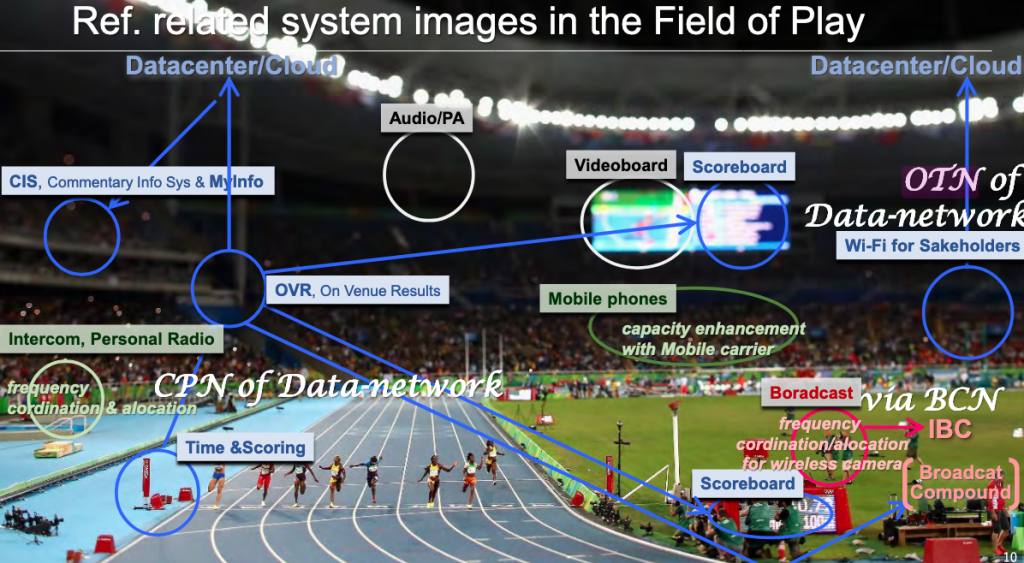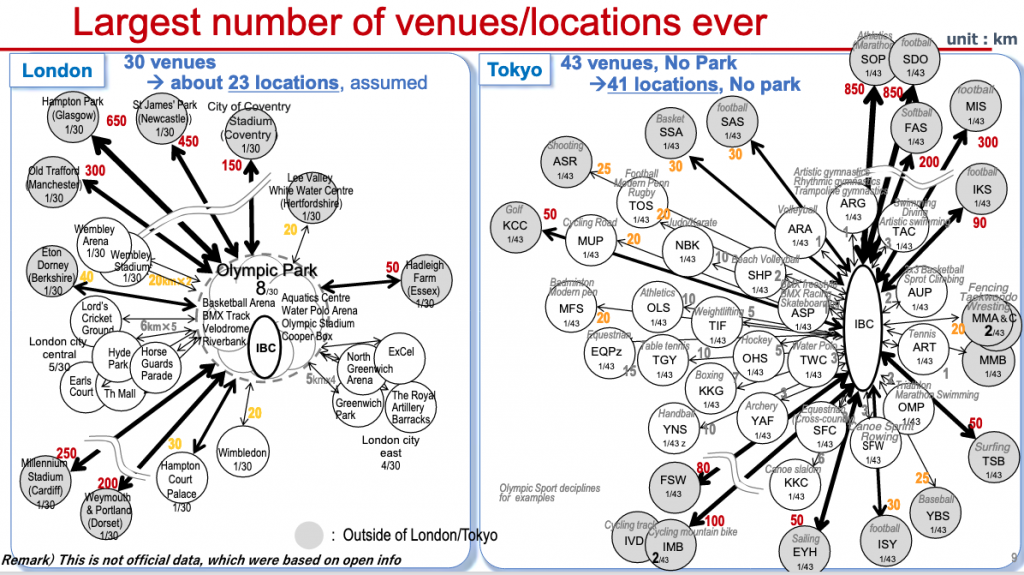
With Tokyo 2020 Olympics largely spectator free, athletes took the gold medal for Internet usage on Games network infrastructure, which saw peak traffic dwarfing that of the London Olympics nine years ago.
Speaking at the APNIC 52 conference this week, the Senior Director of ICT Solutions for the Tokyo Organizing Committee for the Olympic and Paralympic Games, Wataru Saito, gave an exclusive behind the scenes look at the seven-year planning and implementation of the games network, as well as how it performed on the big stage.
Wataru explained that “Internet traffic peaked on the fifth day of the Olympic games at around 20Gbps.” That is nearly three times greater than the London Olympics peak traffic figure. The majority of this, he added, was attributed to “…video streaming from the [Olympic] villages”.
Although the traffic was below what they had planned for, in what has been widely called the most connected Olympic Games in history, it is a credit to the 40-strong local ICT department who racked up some incredible networking achievements in the face of some exceptional challenges.
Supporting the support crew
Planning for Tokyo’s 2020 Olympic telecom activities began in 2014, with a ‘pre-games network’ developed within a year for the organizing committee and organizations involved in the logistics, construction, and servicing of the games (Figure 1).

Although Wataru was not involved in the early stages, he credits advanced planning in forming a strong foundation for designing and migrating to the ‘games network’, comprised of two networks:
- The broadcast contribution network that conveyed 4K-based video material captured by the Olympic Broadcasting Services from each competition venue to the International Broadcasting Centre (IBC). This included installing redundant lines along completely different routes between the venues and the IBC.
- The data network, that included wideband wide area ethernet and domestic data centres, consisted of:
- Competition network for transferring athlete information (past records), schedules, times and scoring. It’s worth watching Wataru explain how all the on-field systems pictured in Figure 2 need to communicate back to this and the other networks.
- Back-office network for Tokyo 2020 office and games operations before, during, and after the games.
- Network for services/tenants for telecom services such as phone and CATV, and connectivity/VLAN for stakeholder systems.

These networks supported facilities such as the IBC as well as the main press centre, athlete villages, user accreditation/uniform centre, main distribution centre, family hotels and organizer offices.

The local ICT department oversaw the planning, installation, and managing of:
- A data and broadcast network across more than 80 locations, including a fully redundant 10G/100G wide area network to connect a record 43 competition venues. This was due to Tokyo not having a traditional Olympic Park.
- 11,000 Wi-Fi access points, nearly one for every athlete that competed at the games.
- 7,500 L2 and L3 switches.
- 4,000km of metal cables and 1,200km fibre optic cables.
- 7,000 CATV transmission and distribution systems and associated coaxial cabling.
- 3,000 fixed phones.
- 30,000 wired Internet ports.
The ICT department also provided VPN services for the staff of affiliate organizations when working from home during COVID-19 lockdown, one of the many challenges that they were successfully able to overcome just before the games began.
Engineering cooperation
The one-year postponement and unprecedented scale of the network aside, Wataru noted several other significant hurdles the ICT department had to overcome right up to the opening ceremony.
“We found some audio systems [in the Olympic stadium] had some interference with [an operator’s] mobile radio waves during the [opening ceremony] rehearsal,” said Wataru.
“We asked the operator to stop using the radio wave during the event.”
Having these types of conversations with technical partners and sponsors was a regular and, at times, challenging part of Wataru’s role. All equipment procurement and system management was managed in-house for the Tokyo Olympics network so sponsor and partner expectations could be managed.
“That is the difficulty of this kind of event,” Wataru said.
To catch up on the presentations at APNIC 52, visit the APNIC 52 conference website.
The views expressed by the authors of this blog are their own and do not necessarily reflect the views of APNIC. Please note a Code of Conduct applies to this blog.
